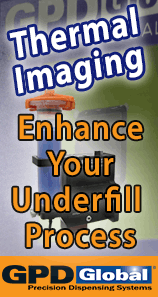Does hydrogen energy really work?
Japan and South Korea have been insisting on the development of hydrogen fuel cell passenger vehicles. From the product point of view, Toyota, Honda, and Hyundai have all launched hydrogen fuel cell passenger vehicles that can be mass-produced. The persistence of the above is very strong. European car companies are two-faceted, both pure electric passenger cars and hydrogen fuel cell passenger cars are studying.

However, this argument has gradually become clear. Recently, foreign media reported that Mercedes-Benz, a subsidiary of Daimler, recently announced that it would cancel its plan to develop hydrogen fuel cell passenger vehicles. Prior to this, Volkswagen had given up the development of hydrogen fuel cell vehicles and firmly stood on the pure electric line. Now Daimler has also given up the development of hydrogen fuel cell passenger cars. The only major European car company is BMW. The development of hydrogen fuel cell passenger vehicles also means that Europe is basically on the line of developing pure electric vehicles. The result of the debate between pure electric vehicles and hydrogen fuel cell vehicles has become very obvious. However, although Chinese, American and European car companies have chosen to develop pure electric passenger vehicles, it does not mean that hydrogen fuel cells will be completely eliminated. In fact, commercial vehicles are more suitable for deploying hydrogen fuel cells than passenger cars.
The volume of the hydrogen storage tank is generally larger, the layout of commercial vehicles is more convenient, and the weight of the hydrogen fuel cell is lighter and the hydrogen refueling speed is faster, which can fill the gap in the field of long battery life and high load for new energy vehicles. In addition, the routes of commercial vehicles are relatively fixed, and the requirements for hydrogen refueling stations are relatively small. In general, the current debate between hydrogen fuel cell passenger vehicles and pure electric passenger vehicles has basically been finalized. Automakers in China, the United States and Europe are all insisting on the development of pure electric passenger vehicles. Only Japanese and Korean automakers are still there. Persist in the development of hydrogen fuel-electric passenger vehicles. In addition, in the wider application of hydrogen fuel cells, most car companies have chosen the route of commercial vehicles.

The hydrogen fuel cell technology still has many problems. First, the hydrogen production process is very inefficient. If the traditional steam reforming or electrolysis method is used to produce hydrogen, the energy loss exceeds 30%, although the latest ion membrane electrolysis method can The energy efficiency is increased to 80%, but the efficiency of direct charging of lithium batteries is 99%, which is a significant gap. Secondly, the cost of hydrogen fuel cells is also very high. Its core catalyst is "platinum" metal, but this metal is very expensive, and each car needs tens of grams. In addition, the storage density of hydrogen is very low. There is no ideal hydrogen storage method. Most of them use high-pressure hydrogen storage methods. However, the development of high-pressure hydrogen storage tanks is difficult. The high pressure is as high as 70Mpa, and the energy loss in the process is about 13%. This pressure places high requirements on the materials and technology of the storage tank. Some companies will use the method of liquefaction for storage. When the hydrogen is cooled to -253°C, it will condense, and the energy loss in the process is extremely large, about 40%. From the perspective of infrastructure, the construction of charging stations and charging piles required for electric vehicles is relatively easy. At present, various countries in the world are promoting the construction of charging piles and charging stations. At present, more than 1.2 million charging piles have been built in China. , The ratio of car to pile is 3:1.
Therefore, hydrogen energy will never be cool. Even if electric vehicles are not competitive at present, they will not be as popular as electric vehicles in the future. It will still be an important part of new energy vehicles. The current development areas of hydrogen energy and pure electricity are different. Pure electricity for passenger cars and hydrogen for commercial vehicles.
About Cheersonic
Cheersonic is the leading developer and manufacturer of ultrasonic coating systems for applying precise, thin film coatings to protect, strengthen or smooth surfaces on parts and components for the microelectronics/electronics, alternative energy, medical and industrial markets, including specialized glass applications in construction and automotive.
The Company’s solutions are environmentally-friendly, efficient and highly reliable, and enable dramatic reductions in overspray, savings in raw material, water and energy usage and provide improved process repeatability, transfer efficiency, high uniformity and reduced emissions.
Cheersonic’s growth strategy is focused on leveraging its innovative technologies, proprietary know-how, unique talent and experience, and global reach to further develop thin film coating technologies that enable better outcomes for its customers’ products and processes. For further information, visit https://www.cheersonic-liquid.cn/en/.






